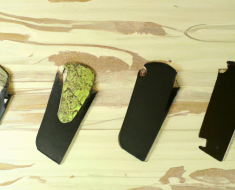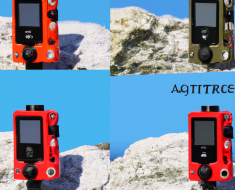“Find your perfect match for flawless performance.”
Benefits of Choosing the Right Recoil Spring
When it comes to choosing the right recoil spring for your pistol, there are several factors to consider. The recoil spring plays a crucial role in the function of your firearm, helping to absorb and control the energy generated by the firing of a round. By selecting the appropriate recoil spring for your specific pistol and ammunition, you can improve the performance and longevity of your firearm.
One of the key benefits of choosing the right recoil spring is improved reliability. A properly matched recoil spring will help to ensure that your pistol cycles smoothly and consistently, reducing the risk of malfunctions such as failure to feed or eject. This can be especially important in high-stress situations where reliability is paramount.
In addition to reliability, selecting the correct recoil spring can also help to improve accuracy. A properly tuned recoil spring can help to reduce muzzle flip and felt recoil, allowing you to maintain better control over your shots. This can lead to tighter groupings and more consistent performance at the range or in competition.
Another benefit of choosing the right recoil spring is increased durability. Using a recoil spring that is too heavy or too light for your specific pistol can put unnecessary stress on the firearm, leading to premature wear and potential damage. By selecting a recoil spring that is properly matched to your pistol and ammunition, you can help to extend the lifespan of your firearm.
Furthermore, selecting the correct recoil spring can also help to enhance shooter comfort. A well-matched recoil spring can help to reduce felt recoil, making shooting more enjoyable and less fatiguing. This can be especially important for newer shooters or those who may have physical limitations that make shooting more challenging.
When it comes to choosing a recoil spring, there are several factors to consider. The weight of the recoil spring will have a significant impact on how your pistol functions. A heavier recoil spring will slow down slide velocity, helping to reduce felt recoil but potentially impacting reliability with lighter loads. On the other hand, a lighter recoil spring will allow for faster slide velocity but may increase felt recoil.
It’s also important to consider the type of ammunition you will be using with your pistol when selecting a recoil spring. Different types of ammunition generate varying levels of energy, which can affect how your pistol cycles. It’s important to choose a recoil spring that is matched to the specific type and power level of ammunition you will be using.
In conclusion, choosing the right recoil spring for your pistol can have a significant impact on its performance and longevity. By selecting a properly matched recoil spring, you can improve reliability, accuracy, durability, and shooter comfort. Take the time to research and test different options to find the best fit for your specific firearm and ammunition. Your pistol will thank you for it.
Factors to Consider When Selecting a Recoil Spring
When it comes to choosing the right recoil spring for your pistol, there are several factors to consider in order to ensure optimal performance and reliability. Recoil springs play a crucial role in controlling the slide velocity and recoil of a pistol, which can directly impact accuracy and overall shooting experience. Selecting the correct recoil spring for your specific firearm is essential for proper functioning and longevity.
One of the first factors to consider when selecting a recoil spring is the caliber of your pistol. Different calibers generate varying levels of recoil, so it is important to choose a recoil spring that is specifically designed to handle the recoil produced by your particular caliber. Using an incorrect or improperly rated recoil spring can lead to malfunctions, increased wear on internal components, and potentially dangerous situations.
Another important factor to consider is the intended use of your pistol. Are you using it for competition shooting, self-defense, or target practice? The type of ammunition you plan to use can also impact your choice of recoil spring. For example, if you plan on shooting lighter loads or reloads with lower power factor, you may need a lighter recoil spring to ensure proper cycling and ejection.
The length of your pistol’s barrel can also influence the selection of a recoil spring. Longer barrels typically require heavier recoil springs to help control the increased slide velocity generated by the longer travel distance. Conversely, pistols with shorter barrels may benefit from lighter recoil springs to compensate for the reduced slide travel.
Additionally, the weight of your pistol can play a role in determining the appropriate recoil spring. Heavier pistols may require heavier recoil springs to help absorb and mitigate the increased felt recoil. On the other hand, lighter pistols may benefit from lighter recoil springs to prevent excessive wear on internal components and reduce perceived recoil.
It is important to note that selecting the right recoil spring is not an exact science and may require some trial and error. It is recommended to start with the manufacturer’s recommended recoil spring weight for your specific pistol model and then make adjustments based on personal preference and performance feedback.
When testing different recoil springs, pay attention to how the pistol handles during firing. Is there excessive muzzle flip or felt recoil? Are there any malfunctions such as failure to feed or eject? These are all indicators that the chosen recoil spring may not be suitable for your specific setup.
In conclusion, choosing the right recoil spring for your pistol is crucial for ensuring reliable functioning and optimal performance. By considering factors such as caliber, intended use, barrel length, pistol weight, and personal preference, you can select a recoil spring that best suits your needs. Remember that experimentation and testing are key in finding the perfect balance between slide control and felt recoil. So take your time, do your research, and enjoy shooting with confidence knowing that you have chosen the right recoil spring for your pistol.
How to Determine the Correct Recoil Spring Weight for Your Pistol

When it comes to choosing the right recoil spring for your pistol, there are a few key factors to consider in order to ensure optimal performance and reliability. One of the most important aspects to take into account is the weight of the recoil spring, as this will directly impact how your pistol functions.
The recoil spring plays a crucial role in absorbing the energy generated by the firing of a round, and then using that energy to cycle the slide and chamber a new round. If the recoil spring is too heavy, it may not allow the slide to cycle fully, leading to malfunctions such as stovepipes or failure to feed. On the other hand, if the recoil spring is too light, it may cause excessive wear and tear on your pistol, as well as potentially causing the slide to cycle too quickly.
So how do you determine the correct recoil spring weight for your pistol? One method is to consult your pistol’s manufacturer or refer to the owner’s manual for recommendations. Many manufacturers provide guidelines for which recoil spring weights are suitable for their pistols based on factors such as caliber and barrel length.
Another option is to experiment with different recoil spring weights to find the one that works best for your specific setup. Start by selecting a recoil spring that is within the recommended range for your pistol, and then test it out at the range. Pay attention to how your pistol feels during firing – does it cycle smoothly, or does it feel sluggish or jerky? Keep in mind that different types of ammunition can also affect how your pistol functions, so be sure to test a variety of loads with each recoil spring weight.
If you’re still unsure about which recoil spring weight is right for your pistol, consider seeking advice from a qualified gunsmith or firearms instructor. They can help assess your specific needs and make recommendations based on their expertise and experience.
Ultimately, choosing the right recoil spring for your pistol is a process of trial and error. It may take some time and experimentation to find the perfect balance between reliability and performance. Remember that what works best for one shooter may not necessarily work best for another, so don’t be afraid to try out different options until you find what works best for you.
In conclusion, selecting the correct recoil spring weight for your pistol is essential for ensuring smooth and reliable operation. By considering factors such as manufacturer recommendations, testing different weights at the range, and seeking advice from experts if needed, you can find the perfect recoil spring for your specific setup. So don’t be afraid to experiment and fine-tune your setup – your pistol will thank you for it in the long run.
Differences Between Factory and Aftermarket Recoil Springs
When it comes to maintaining and customizing your pistol, one of the key components to consider is the recoil spring. The recoil spring plays a crucial role in the functioning of your firearm, helping to absorb and redirect the energy generated by the firing process. While factory recoil springs are designed to work effectively with your pistol, aftermarket options offer a range of benefits that may be worth exploring.
Factory recoil springs are typically included with your pistol when you purchase it and are specifically designed by the manufacturer to work seamlessly with your firearm. These springs are made from high-quality materials and are calibrated to provide optimal performance for the specific make and model of your pistol. Using a factory recoil spring ensures that your firearm functions reliably and consistently, as it was intended by the manufacturer.
However, there are times when aftermarket recoil springs may be a better option for your pistol. Aftermarket recoil springs are designed and manufactured by third-party companies, offering a range of customization options that may not be available with factory springs. These aftermarket options can provide increased durability, improved performance, and enhanced control over the recoil of your pistol.
One of the key differences between factory and aftermarket recoil springs is the material used in their construction. Factory recoil springs are typically made from high-quality steel or other durable materials that have been tested and approved by the manufacturer. Aftermarket recoil springs, on the other hand, may be made from a wider range of materials, including stainless steel, chrome silicon, or other specialized alloys. These materials can offer increased durability and performance benefits compared to factory springs.
Another factor to consider when choosing between factory and aftermarket recoil springs is the level of customization available. While factory recoil springs are designed to work with specific makes and models of pistols, aftermarket options often come in a variety of weights and lengths that can be tailored to suit your individual preferences. This customization allows you to fine-tune the performance of your pistol, adjusting factors such as felt recoil, slide velocity, and muzzle flip to better suit your shooting style.
In addition to increased customization options, aftermarket recoil springs can also provide improved performance over factory options. Aftermarket springs are often designed with tighter tolerances and higher quality control standards than factory springs, leading to more consistent and reliable operation. This can result in smoother cycling, reduced muzzle rise, and enhanced accuracy when shooting your pistol.
Ultimately, the decision between factory and aftermarket recoil springs will depend on your individual needs and preferences as a shooter. If you value consistency and reliability above all else, sticking with factory recoil springs may be the best choice for you. However, if you are looking to customize and optimize the performance of your pistol, exploring aftermarket options could provide significant benefits.
Regardless of which type of recoil spring you choose for your pistol, it is important to carefully follow installation instructions provided by the manufacturer or seek assistance from a qualified gunsmith if needed. Proper maintenance and care for your firearm will ensure that it continues to perform at its best for years to come.
Common Mistakes to Avoid When Choosing a Recoil Spring
Choosing the right recoil spring for your pistol is essential to ensure optimal performance and longevity of your firearm. However, there are common mistakes that many gun owners make when selecting a recoil spring that can lead to malfunctions and decreased accuracy. In this article, we will discuss some of these mistakes and provide tips on how to avoid them.
One common mistake that gun owners make when choosing a recoil spring is selecting one that is too heavy or too light for their pistol. A recoil spring that is too heavy can cause excessive recoil, making it difficult to control your shots and potentially causing damage to your firearm. On the other hand, a recoil spring that is too light may not provide enough resistance to properly cycle the slide, leading to failure to eject or feed issues.
To avoid this mistake, it is important to consult your pistol’s manufacturer recommendations for the appropriate weight range for your specific model. Additionally, you can experiment with different weights within this range to find the optimal balance between reduced felt recoil and reliable functioning.
Another common mistake when choosing a recoil spring is neglecting to consider the ammunition you will be using. Different types of ammunition produce varying levels of energy and pressure, which can affect how your pistol cycles. Using ammunition that is too powerful for your recoil spring can cause excessive wear and tear on your firearm, while using ammunition that is too weak may not provide enough energy to cycle the slide properly.
To avoid this mistake, it is important to match the weight of your recoil spring with the type of ammunition you plan on using. If you regularly switch between different types of ammunition, consider investing in multiple recoil springs with varying weights to accommodate each type effectively.
Additionally, failing to replace a worn-out recoil spring is another common mistake that gun owners make. Over time, recoil springs can become weakened and lose their ability to absorb and distribute the energy generated during firing. This can lead to increased felt recoil, decreased accuracy, and potential malfunctions.
To avoid this mistake, it is recommended to replace your recoil spring at regular intervals as recommended by the manufacturer or after a certain number of rounds fired. Keeping track of the round count through a logbook or maintenance schedule can help ensure that you replace your recoil spring before it becomes too worn out.
In conclusion, choosing the right recoil spring for your pistol is crucial for maintaining optimal performance and reliability. By avoiding common mistakes such as selecting an inappropriate weight, neglecting ammunition considerations, or failing to replace worn-out springs, you can ensure that your firearm functions smoothly and accurately. Take the time to research and experiment with different recoil springs to find the perfect balance for your specific needs and preferences. Your pistol will thank you for it in the long run.





